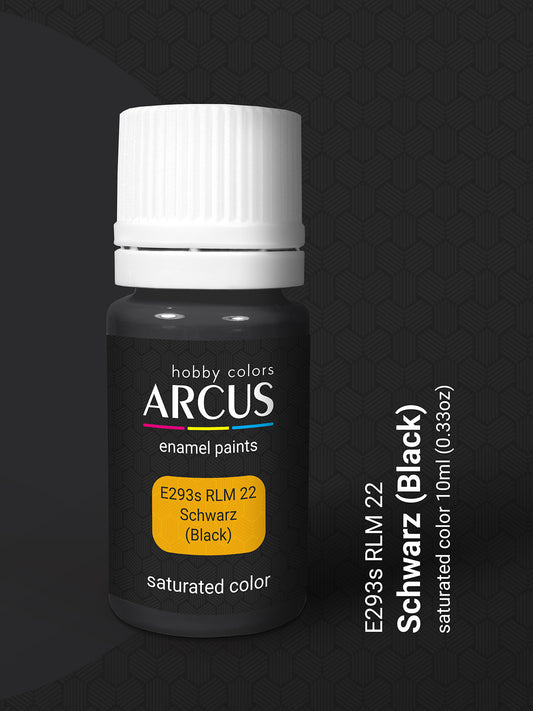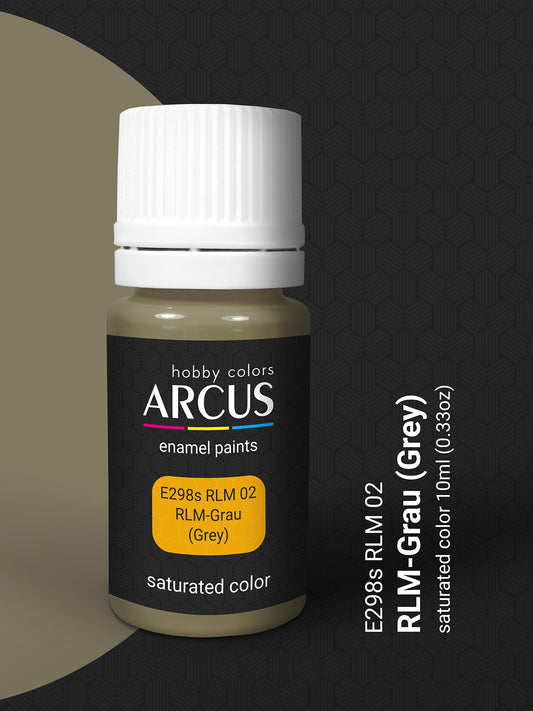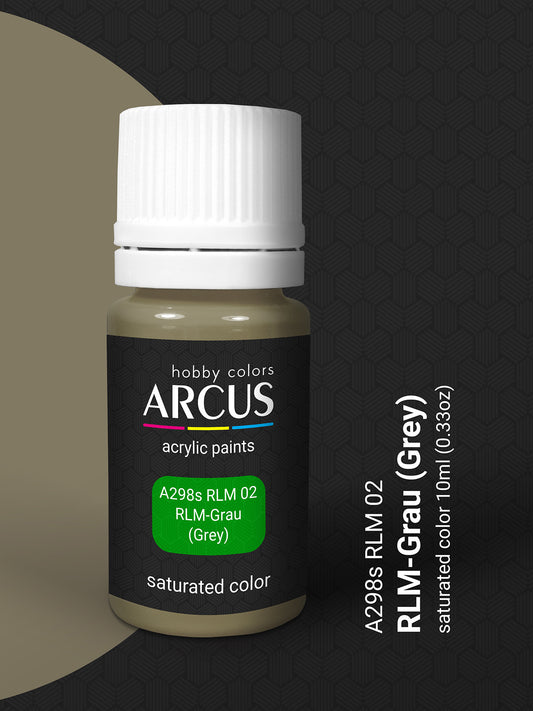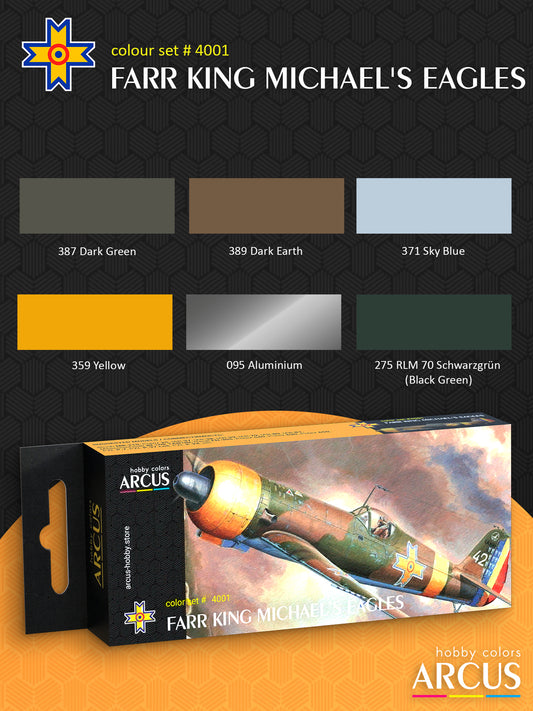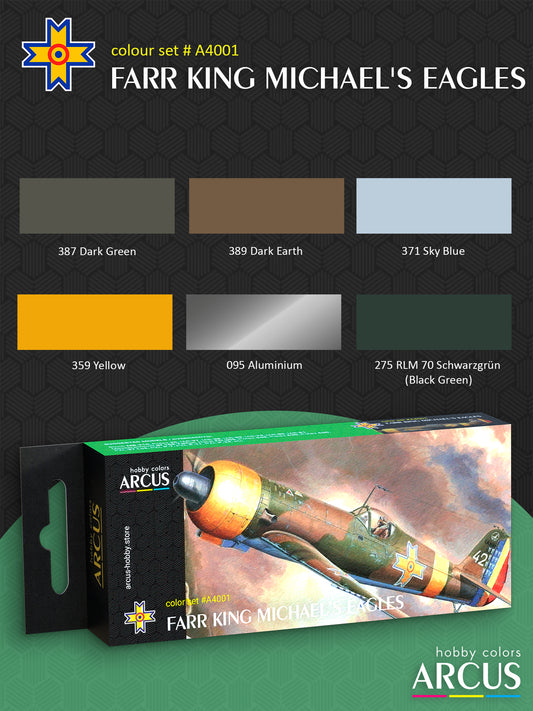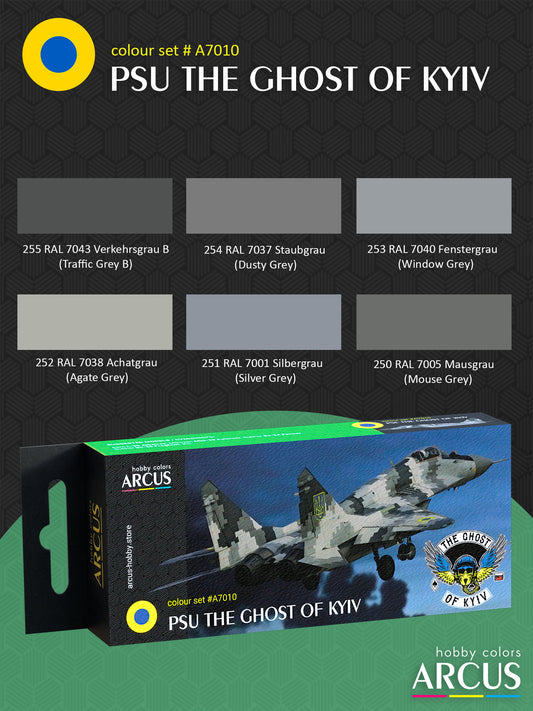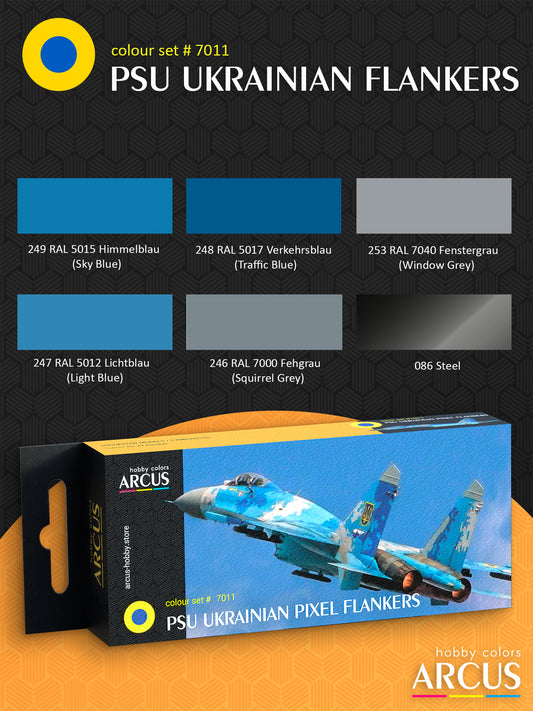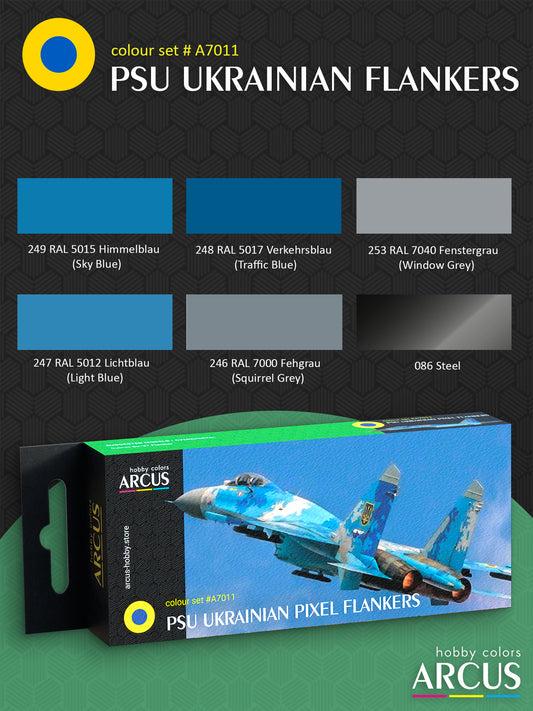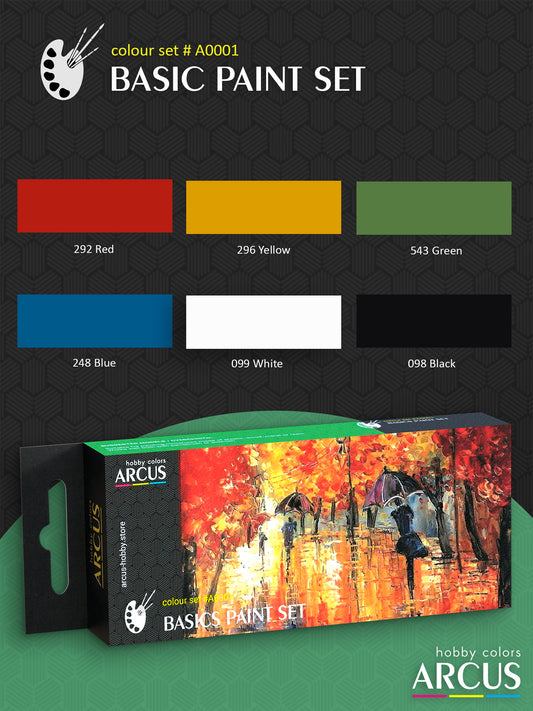第二次世界大戦中、ルーマニア王立空軍(Aeronautica Regală Română)は軍事作戦において重要な役割を果たしました。その任務には地上部隊の支援、偵察、爆撃作戦、そして航空支援が含まれていました。
ルーマニア王立空軍の歴史
ルーマニア王立空軍は1924年1月1日に、前身であるルーマニア航空軍団(Corpul Aerian Român)を基に正式に設立され、ルーマニアの主要な軍用航空部隊となりました。
1940年、ハンガリーによる北トランシルバニア併合以前、ルーマニア王立空軍はすでにハンガリー王立空軍と対峙していました。ハンガリー軍がルーマニアの領空に侵入したことを受け、ルーマニア第1戦闘航空団(Flotila 1 Vânătoare)の第51戦闘飛行隊(Escadrila 51 Vânătoare)は、当時最新鋭の「ハインケルHe 112」戦闘機を装備し、クルジュのソメシュニ飛行場へ移動し、第2戦闘航空団(Flotila 2 Vânătoare)を支援しました。同航空団は旧式の「PZL P.11」戦闘機を使用していました。1940年8月28日、ルーマニアのニコラエ・ポリズ=ミクシュネシュティ中尉(Nicolae Polizu-Micșunești)は、「ハインケルHe 112」に搭乗し、ベルヴェニ近郊でハンガリー空軍の「カプローニCa.135」爆撃機を撃墜しました。
戦争中、ルーマニア王立空軍はドイツ空軍(ルフトバッフェ)と密接に連携し、ウクライナ南部やクリミアでの攻撃作戦に参加しました。スターリングラードの戦いの後、ドイツ南方空軍司令部がブカレストに移動しました。ルーマニアとブルガリアの航空部隊は黒海での哨戒および偵察任務を共同で実施しました。さらに、ルーマニア空軍はプロイェシュティやブカレストの石油施設を連合軍の爆撃から守る役割を担い、黒海の枢軸国の輸送船団の護衛にも従事しました。これらの作戦において、ルーマニア空軍のパイロットはアメリカ陸軍航空軍やイギリス空軍の航空部隊と交戦しました。
ルーマニア空軍のパイロットは、ドイツやイタリア製の「メッサーシュミットBf 109」、「ハインケルHe 112」のほか、ルーマニア独自設計の「IAR 80」および「IAR 81」戦闘機を運用しました。さらに、捕獲機も戦闘に投入されました。
1944年8月23日のクーデターの後、ルーマニアは連合国側へと転じました。ルーマニア空軍はドイツ軍およびハンガリー軍とトランシルバニアおよびスロバキアで戦闘を繰り広げました。ブカレストの戦いでは、ルーマニアのパイロットはドイツ空軍の22機(うち3機は「メッサーシュミットMe 323『ギガント』」)を撃墜し、さらに地上で5機を破壊しました。1944年9月4日から戦争終結までの間、ルーマニア空軍は101機の敵機を撃墜し、30機の損失を被りました。
第1航空軍団
第1航空軍団(Corpul 1 Aerian)は、1943年1月1日に航空戦闘集団(Grupul de Luptă Aeriană)を基盤として編成されました。これは、東部戦線におけるルーマニアの主要な航空部隊でした。しかし、その歴史は赤軍との戦いだけにとどまりませんでした。1944年8月にルーマニアが連合国側へ転じた後、この軍団はルーマニア軍およびソ連軍を支援し、トランシルバニア、ハンガリー、チェコスロバキアでの戦闘に参加しました。
1941年6月に創設された航空戦闘集団は、「バルバロッサ作戦」開始時においてルーマニアの主力航空部隊でした。その編成には、第1戦闘航空団(Flotila 1 Vânătoare)および第2戦闘航空団(Flotila 2 Vânătoare)、第1爆撃航空団(Flotila 1 Bombardament)および第2爆撃航空団(Flotila 2 Bombardament)、そして第2護衛航空団(Flotila 2 Gardă Aviație)が含まれており、合計約253機の戦闘機を擁していました。
この部隊のパイロットたちは、ベッサラビアやオデッサ包囲戦に参加しました。その間、彼らは800回以上の戦闘出撃を行い、250機以上の敵機を撃墜しましたが、自軍も16機の戦闘機を失いました。1941年の作戦終了後、部隊は一時解散されましたが、すぐにエルミル・ゲオルギウ将軍(Ermil Gheorghiu)の指揮のもとで再編成されました。1942年秋には、ドイツ空軍の第4航空艦隊(Luftflotte 4)との協力が強化され、ルーマニアの戦闘機部隊はスターリングラードへのドイツ爆撃機の護衛を担当することになりました。
「タチンスカヤ」飛行場および「モロゾフスカヤ」飛行場を拠点とし、ルーマニア空軍のパイロットは偵察、迎撃、爆撃任務を遂行し、スターリングラード戦の最前線でドイツおよびルーマニア地上部隊を支援しました。しかし戦況は急変し、「タチンスカヤ」からの撤退後、部隊はルーマニアへ戻り、1942年12月には「ノヴォチェルカッスク」へと移動しました。
1943年1月1日、航空戦闘集団は第1航空軍団へと改編されました。スターリングラードでの壊滅的な戦闘の後、軍団は「メリトポリ」、「オデッサ」、「ティラスポリ」、「ムィコラーイウ」を経て後退しながら再編成を進めました。戦闘機部隊は「メッサーシュミットBf 109G」に更新され、爆撃機部隊は「ユンカースJu 88」に、偵察部隊は「Ju 88D-1」に装備を変更しました。1943年6月までに軍団は戦闘能力を回復し、司令部を「マリウポリ」に移し、東部戦線南部での作戦を再開しました。
1943年秋から冬にかけて、軍団の爆撃機部隊はドイツおよびルーマニア地上部隊の航空支援を行い、敵陣地への爆撃を実施しました。一方、偵察部隊も前線で積極的に活動しました。しかし1944年初頭、第1航空軍団はソ連軍の反攻によって大損害を受け、ベッサラビアに撤退を余儀なくされました。新たな航空軍団の編成が計画されていたものの、実際に戦線に投入されたのは第3航空軍団(Corpul 3 Aerian)のみで、第1航空軍団に代わって最前線の戦闘に参加しました。
1944年8月23日時点で、両軍団ともルーマニア国内に展開しており、ドイツ軍との戦闘を行っていました。第3航空軍団はスロボジア周辺で作戦を展開し、第1航空軍団はブザウ周辺で防衛線を維持しました。1944年10月25日、第3航空軍団は第3航空区に統合され、第1航空軍団がルーマニア空軍の唯一の大規模作戦部隊として残されました。
1944年9月9日、ルーマニアが正式に連合国側へ加わると、第1航空軍団はソ連の第5航空軍の指揮下に入りました。この時点でルーマニアのパイロットたちは赤軍と共に戦い、その進撃を支援しました。1944年10月25日までに、軍団は14個飛行隊と約176機の航空機を擁していました。ソ連・ルーマニア軍の進撃に伴い、軍団は増援を受け、新たな作戦任務を遂行しました。最終的な試練となったのは、チェコスロバキアでの最後の大規模攻勢でした。1945年5月18日までにルーマニア空軍は数十回の戦闘出撃を行い、176機の敵機を撃墜することに貢献しました。
1945年夏、軍団の一部の部隊は「ブラチスラバ」や「ウィーナー・ノイシュタット」での航空デモンストレーションに参加し、その後7月から8月にかけてルーマニアへ帰還しました。
ルーマニア王立空軍の迷彩パターン
第二次世界大戦が勃発する前、ルーマニアはドイツ、ポーランド、フランス、カナダ、イタリアから航空機を輸入していました。これらの航空機は、多くの場合、元の国の迷彩パターンをそのまま維持していました。
例えば、ルーマニア空軍に配備されたドイツ製の「ハインケルHe 112」は、全体がグレーのものと、グリーンの迷彩パターンの2種類が存在しました。「メッサーシュミットBf 109E」は、当時のドイツ空軍標準の塗装が施されていました。1942年からルーマニア空軍に供給された「メッサーシュミットBf 109G」は、1941年以降のドイツ空軍で一般的だった2色のグレーの迷彩パターンで仕上げられていました。また、「ハインケルHe 111」や「ユンカースJu 87」爆撃機も、ドイツから供給されたオリジナルの塗装を維持していました。
イギリスから供給された航空機も、イギリス空軍の塗装を維持していました。これらの機体は、「テンペレート・ランド・スキーム(Temperate Land Scheme)」と呼ばれるパターンを採用しており、1938年からイギリス空軍で使用されていました。
イタリアから供給された「サボイア・マルケッティSM.79」は、イタリア空軍の標準塗装を維持していました。一般的に、サンド、グリーン、ブラウンの迷彩が使用され、南ヨーロッパや北アフリカでの運用に適した配色となっていました。
ポーランドから購入した航空機も、オリジナルの塗装を維持していました。一方、ルーマニアの「IAR」工場では、ポーランドの「PZL P.11F」戦闘機がライセンス生産されており、ルーマニア王立空軍の標準塗装が施されました。1939年から1941年にかけて、ルーマニアの航空機の塗装にはイギリスの「セルロン(Cellon)」社の塗料が使用され、その色調はイギリス空軍の基準に準拠していました。具体的には、「ダークアース(Dark Earth)」「ダークグリーン(Dark Green)」「スカイブルー(Sky Blue)」が使用されました。しかし、ルーマニアが枢軸国側に加わった後、イギリス製塗料の供給は停止し、代わりにドイツの「ヘルビヒ・ハールハウス(Herbig Haarhaus)」社製の塗料が導入されました。これに伴い迷彩パターンも変更され、機体上面は単色のグリーンに塗装され、下面は新たなブルー系の色調が採用されました。
1941年春、ルーマニア空軍はドイツ空軍とともに東部戦線に参戦し、枢軸国軍の航空機と同様に、識別のための黄色いマーキングを施しました。主な識別箇所として、翼端、エンジンカウル、胴体に黄色の帯が追加されました。その後、一部の機体では識別帯の上に迷彩色を上塗りする処理が行われましたが、この変更は統一的に適用されたわけではなく、「IAR-80」や「IAR-81」などの機体ではエンジンカウルの黄色が長期間維持された例もありました。
1944年9月、ルーマニアが連合国側へ転向すると、識別用の黄色いマーキングはすべて白に塗り替えられました。同時に、従来の「ミハイ十字」に代わり、戦前と同様のルーマニア国旗の3色を基調とした円形国籍マークが再び採用されました。
<h3>ルーマニア王立空軍の標準塗装</h3>
<p>ルーマニア空軍はさまざまな国の航空機を運用していたため、その迷彩塗装は基本的に製造国の標準に準拠していました。ドイツ製の航空機は「RLM」基準で塗装され、イギリス製の航空機は「MAP」仕様に準拠していました。ポーランドの航空機は、「PWS」および「PZL」工場の出荷時の塗装を維持していました。</p>
<p>一方、ルーマニア国内で製造された航空機、特にブラショフの「IAR」工場で生産された機体は、1941年までは「MAP」基準のイギリス製塗料を使用していました。しかし、1941年以降、戦争終結までの間、ルーマニア国内の航空機はドイツから供給された「RLM」基準の輸出用塗料で塗装されるようになりました。</p>

 セール販売元:Arcus Hobby通常価格 $1.69 USD通常価格単価 あたり
セール販売元:Arcus Hobby通常価格 $1.69 USD通常価格単価 あたり
 セール販売元:Arcus Hobby通常価格 $1.69 USD通常価格単価 あたり
セール販売元:Arcus Hobby通常価格 $1.69 USD通常価格単価 あたり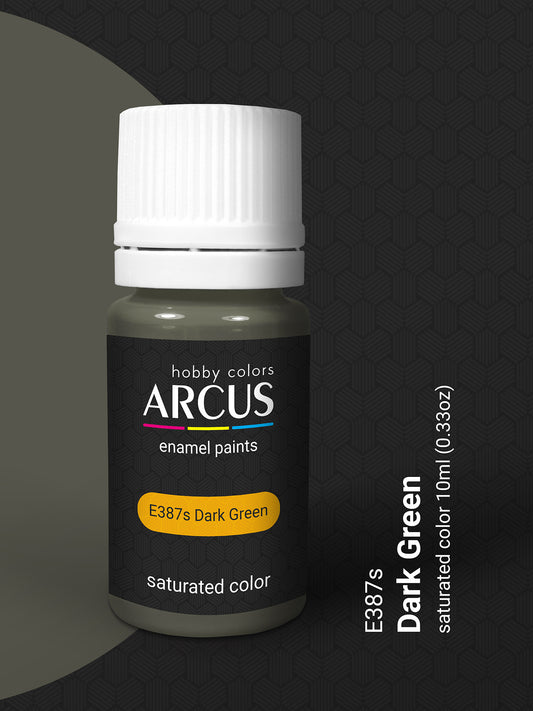
 セール販売元:Arcus Hobby通常価格 $1.69 USD通常価格単価 あたり
セール販売元:Arcus Hobby通常価格 $1.69 USD通常価格単価 あたり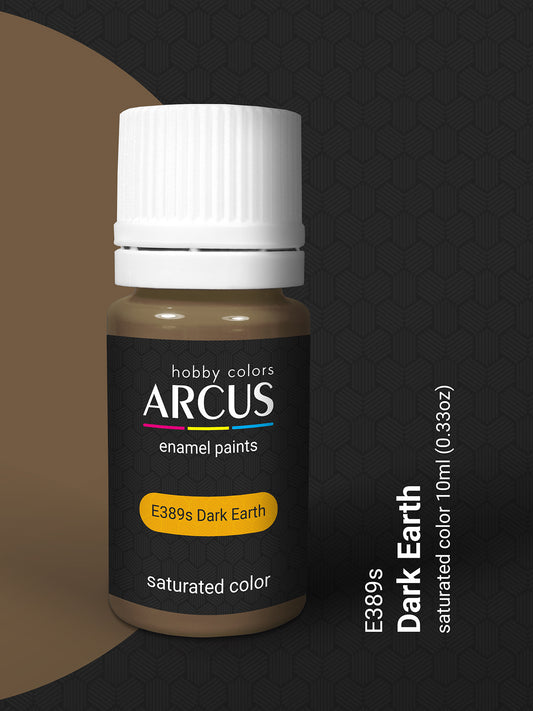
 セール販売元:Arcus Hobby通常価格 $1.69 USD通常価格単価 あたり
セール販売元:Arcus Hobby通常価格 $1.69 USD通常価格単価 あたり

